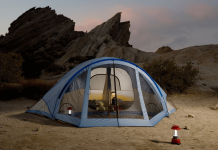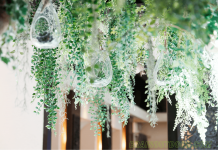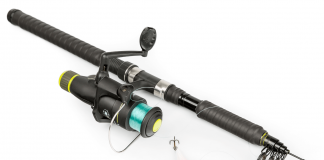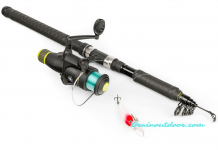A fishing rod is not meant for catching fish only. Not so many people have an idea how to catch lobster with a fishing rod. The most common methods of catching lobsters are either by hand or with nets. Before you set to catch lobsters, you need to learn regulations for lobster fishing. Fishing them needs one to get a license. Note that these regulations vary from state to state. In this guide, we’re going to learn how to catch lobster with a fishing rod.
Know The Right Time To Catch Lobsters?
There are more lobsters to catch in late June and December than in the other months of the year. However, it’s important to keep in mind different regions will have a different lobster fishing season. For example, instead of June and December, you are likely to find lobsters in large quantities in the other months in places like New Zealand. If you want to catch more lobsters or have luck catching, try fishing at night.
During the night, the lobsters will come out to look for food. The sites where there is a large concentration of lobsters are places like Maine, New England. Lobsters like to hide around the coral reefs. You are likely to spot lobsters eating or hiding in these places, including rocky areas.

Related: How to Hang Air Plants with Fishing Line
Choose A Suitable Rod For Lobster Fishing
The right gear will make you have a great fishing experience. Fishing rods come in various designs, and you can get a spinning or a bait casting rod. But a baitcasting rod is the best for several reasons.
The rod should be durable enough to withstand the weight, and it should be easy to use when casting. You will need a graphite rod. What matters the most is finding the right fishing gear – including the rod, reel, and line. For fishing lines, a monofilament will work fine since casting with it is relatively easy. You can also use a braided line if you prefer to.
The Best Bait
Lobsters eat anything thrown their way. Creating bait for them is therefore not that hard. Meaty foods do attract them the most. If you want to have a catch quickly, add its favorite bait. It will lure it pretty fast and eventually get caught. Some of the fishing baits most fishers used for catching lobsters include sea-mussel, fish heads, fish frames, mussel, among others.
Lobsters are not like crabs that need fresh baits. To catch a lobster easily, use any stale bait. You can research more on the best baits’ lobsters are attracted to, such as Bluefish, menhaden, mackerel, and salted herring. Also, check the fishing regulations for lobsters to avoid catching them illegally.
Related: How to Hang Air Plants with Fishing Line
In Case There Isn’t Any Catch
When lobsters get caught to the hook, you will feel a tug on the line. In case there is nothing on the fishing line, it means that it hasn’t caught anything. Sometimes you could be fishing in the wrong areas where there are no lobsters. If you are also using the incorrect lures and baits, you reduce catching any lobsters.
Spool The Fishing Line
Spool the fishing line to the reel. Ensure you end up over spooling as the reel. It will make casting a little hard to do. For a long cast, you will need to have enough line on the reel to enable you to do the extended casting. Add the hook to it and the bait of your choice to the fishing hook. There are several fishing knots one can use to tie the fishing hook on the line. A Palomar knot is among the common ones used by most anglers. You can also connect a weight at the end of the tag line to increase the chances of the lobster getting caught.
Cast The Rod

Lower your bait underwater by casting the rod and wait for a few seconds to have a catch. You can choose to have an overhead cast or any other method. You also need to cats with your dominant hand. Waiting ensures the lobsters catch the bait before you start to reel. It makes you sure the lobster has taken the bait. When a lobster gets caught, it will struggle to try and get out of water. Do not reel immediately and wait before starting to spool. Keep reeling in the fish until you get it out of water.
Reeling
Different rods will have a baitcasting, spinning, or a spin caster reel. With a spin caster, you will need to push the button. With a baitcasting reel, it also requires a push of a button to reel. To properly reel the lobster, allow the rod to be at a 45-angle degree, and the drag has stopped moving.
Start to reel when their lobster has stopped making movements in the water. Depending on the lobster’s size, it might make the rod bend slightly as you lift it off the water. Continue doing this until you get the lobster out of the water surface.
Release The Lobster
Release the lobster once you get hold of it, do not wait until it is exhausted. Release it gently, and most lobsters, when caught, get released when still alive. You can also use a release tool to help remove the lobster from the hook. After releasing them from the fishing hook, store them somewhere safe to die from more exhaustion. They die quickly and need proper care after removing them from the water.
Catching lobsters using a fishing rod is not something that will take much of your time. You will apply the same technique when catching fish with a fishing rod. Know where there is a higher concentration of lobsters if you want to get lucky catching one with a rod. Use appropriate baits that will attract the lobsters. It is also worth remembering not all the fishing baits used for other types of fish will be useful for lobsters. Lastly, once you have the lobster attached to the hook, release it immediately it gets out of water.
































